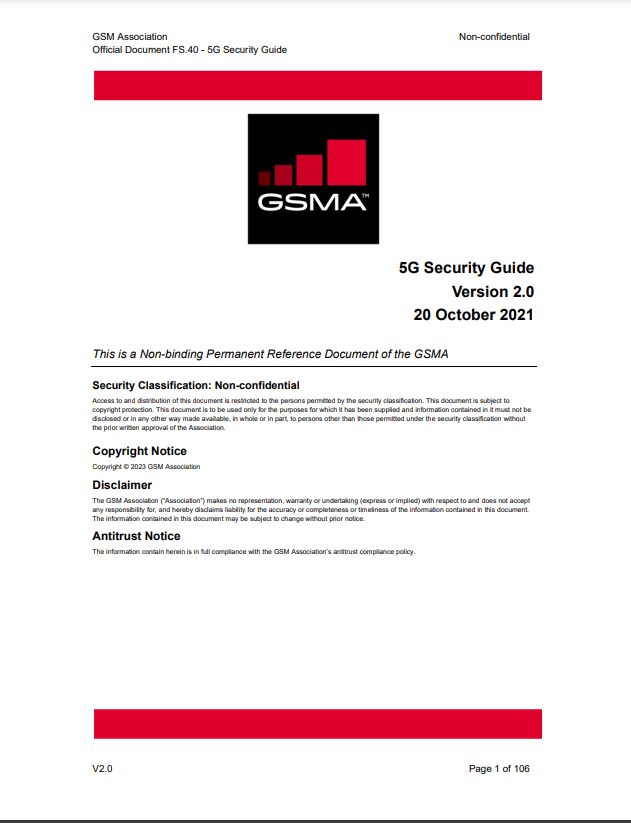FS.40 5G Security Guide
The fifth generation (5G) telecommunication system will deliver enhanced mobile broadband, massive machine type communications, and ultra-reliable and low latency communications to subscribers. 5G will also provide multi-network slicing, multi-tenancy, multi-level of services and multi-connectivity network capabilities to initiate the vertical industry to join the operation and development of the 5G services regime.
Alongside the new capabilities in 5G, there are also changes in how networks are built and managed. These include virtualisation and containerisation, network function virtualisation (NFV), open source software, SDN security monitoring, security assurance, security of O-RAN interfaces and components, network slicing, programmable network, multi-access edge computing (MEC) and combined development and operations functions, so called DevOps. These new techniques will give future networks flexibility and agility in developing and deploying services and network infrastructures. However, they also introduce new attack vectors in next generation telecommunications systems and the organisations that use them.
This document discusses different aspects of 5G security identified by GSMA as requiring attention within appropriate bodies (e.g. 3GPP, IETF and GSMA).
Audience: Technical security practitioner, Senior security professional
Resource technology specifics: 5G security
Resource type: Guideline
Resource enforcement: Voluntary
Resource certification type: Self-assessment
| Key Benefits |
|
